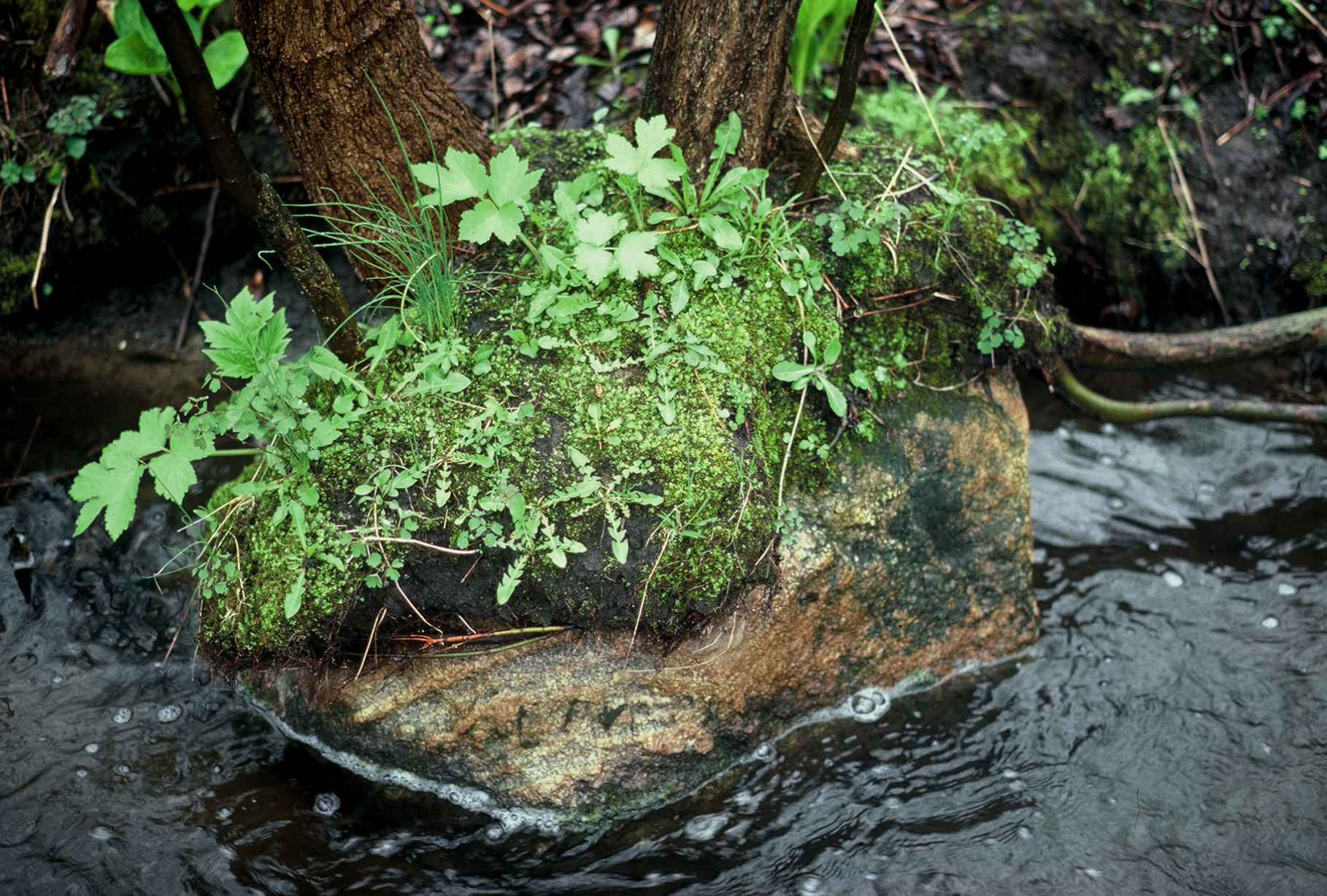

Ranetka is a Malus baccata –Manchurian apple cross which can tolerate extreme cold and short season areas. Originally from Alaska this is one of the cold hardiest apples in the world. Has been free of leaf diseases here and fruits on young trees only 4-6 ft. tall. Vigorous growing-excellent producer. Small ½” elongated purple or green-yellow fruit. Red fruited selections also show up but more rare with this particular seed strain. Dense white flowering in early spring. Because of the tartness of the fruit, they have been used to mix with other milder apples for apple butter and jelly. Ranetka produces uniform seedlings for grafting and is often sought after for that. It tends to be a dwarf tree at my farm and super spur type of crabapple. Excellent seed source for precocity and heavy fruiting. This apple is growing right next to a improved Dolgo crabapple variety Plentiful.
"Rotunda" Ranetka -Selected seedling grown for its heavy fruit production. Produces a round dome shaped yellow incredibly tart crabapple that ripens in August. The tree tends towards biennial bearing. The fruit is produced in solid clusters all along the branches and would be considered spur bearing. It is a dwarf tree to 10 feet tall after 25 years of growth. Fairly good leaf retention and goes dormant in September. Perfect for incredibly cold areas for jelly and other health drinks. Because of its over production it can go to biennial bearing. Difficult to cut scions from it because it is so spur type. Scion wood available upon request with seed purchase.
I received these seeds and trees from Lawyer Nursery in Montana many years ago. That seed source was from Alaska. The selections tended to be mostly green or yellow. Because apples are open pollinated and they are all slightly different I began making seed selections based on the more dwarf characteristics with heavy spur type fruiting but not paying attention to fruit quality for eating fresh. They are all fairly tart and astringent apples.
To germinate the seeds: Plant outside in fall. Cover 1/4 inch deep and tamp into the soil firmly. Cover with light 1/8 inch compost or sawdust. Seeds will germinate very quickly in the spring and are somewhat frost resistant. For indoor germination: Put in lightly moist Canadian peat moss and store from 33-38 F for 60-120 days. With this strain many of the seeds will sprout very quickly after 60 days. Others will take the whole 120 days. When you remove the bag after 120 days from the fridge the remainder will usually sprout. Pluck the sprouted one and put in a pot with well drained soil.
| Plant Specs |
| Genus & Species |
Malus x Ranetka |
| Seed Source |
Michigan, originally obtained from Lawyer Nursery Company from Montana |
| Hardiness |
Minus 40 F or maybe more. |
| Height (ft) |
8-20 ft. tall with equal width. Tends to be more of a dwarf tree. |
| Pollination Requirements |
Self fertile |
| Soil |
Will grow in a wide variety of soils but probably best suited to dry sandy soils. |
| Climate |
Zone 2ish-zone 7. Best in the northern part of its range. |
| Ease of Cultivation |
Very quick to fruit from seed. Produces a significant amount of naturally dwarf trees as well as super heavy producing crabapples. Very strong tannic flavors may limit its use for processing but including wildlife use the apples are flawless and super heavy in production. |

